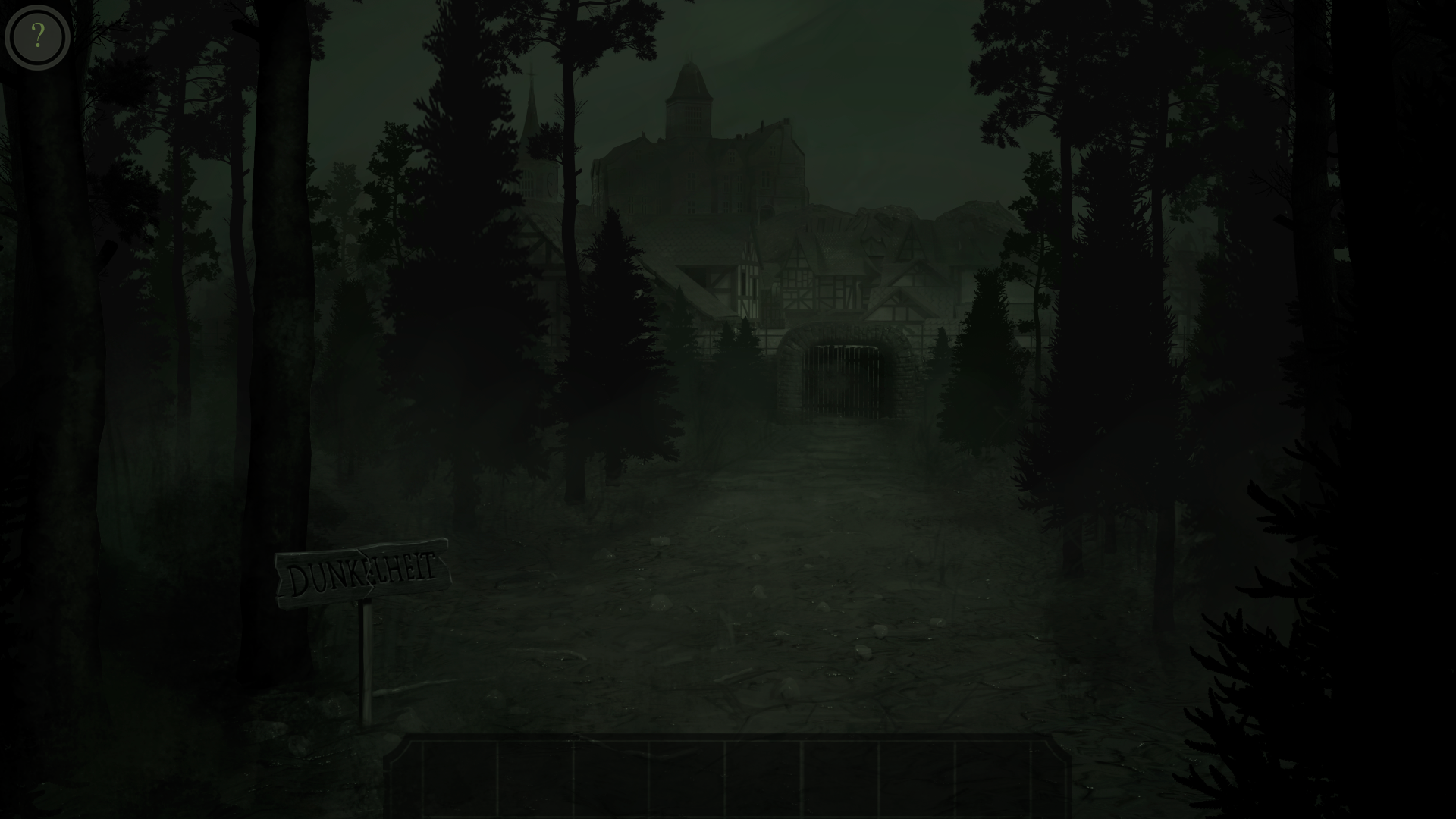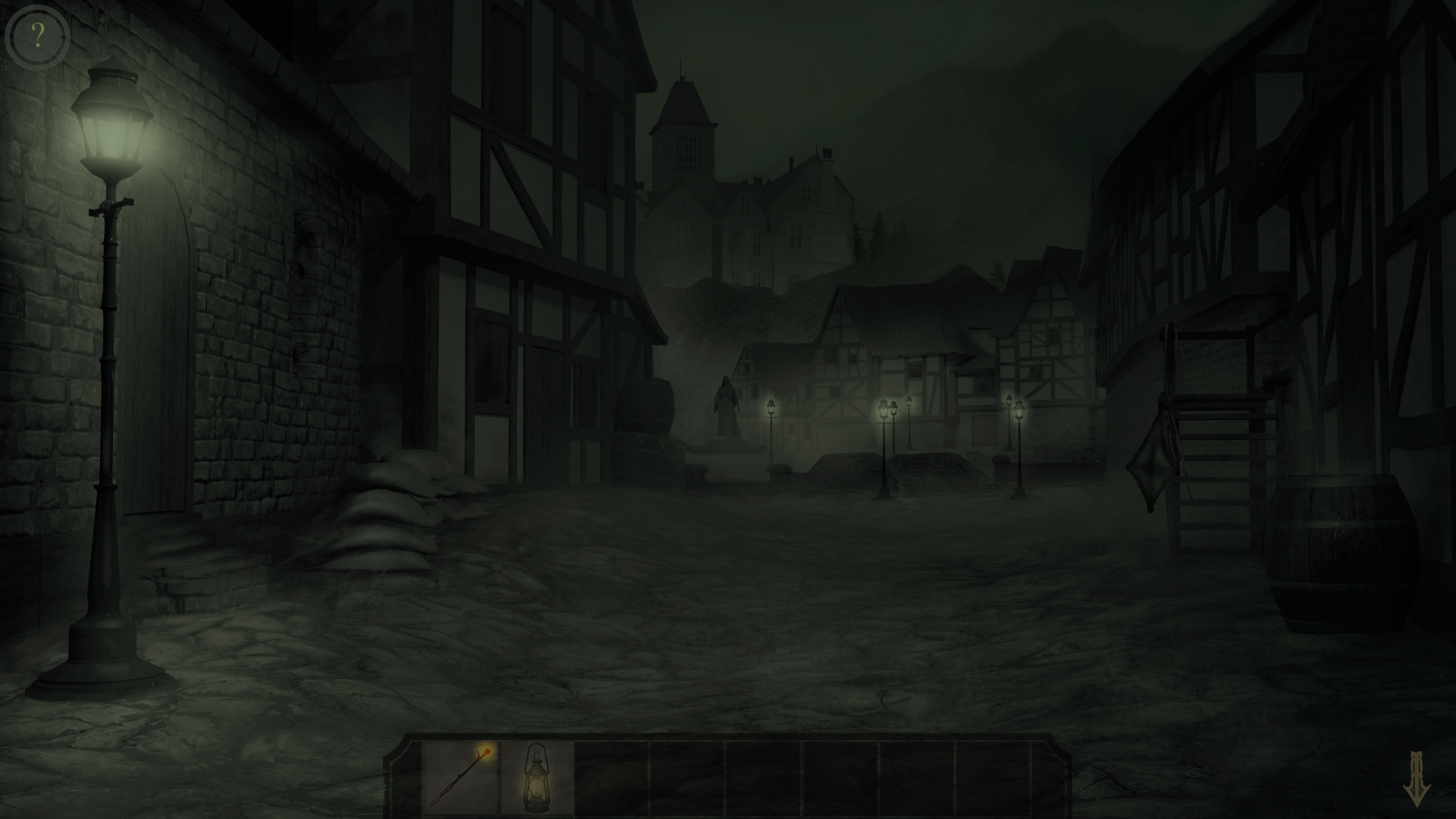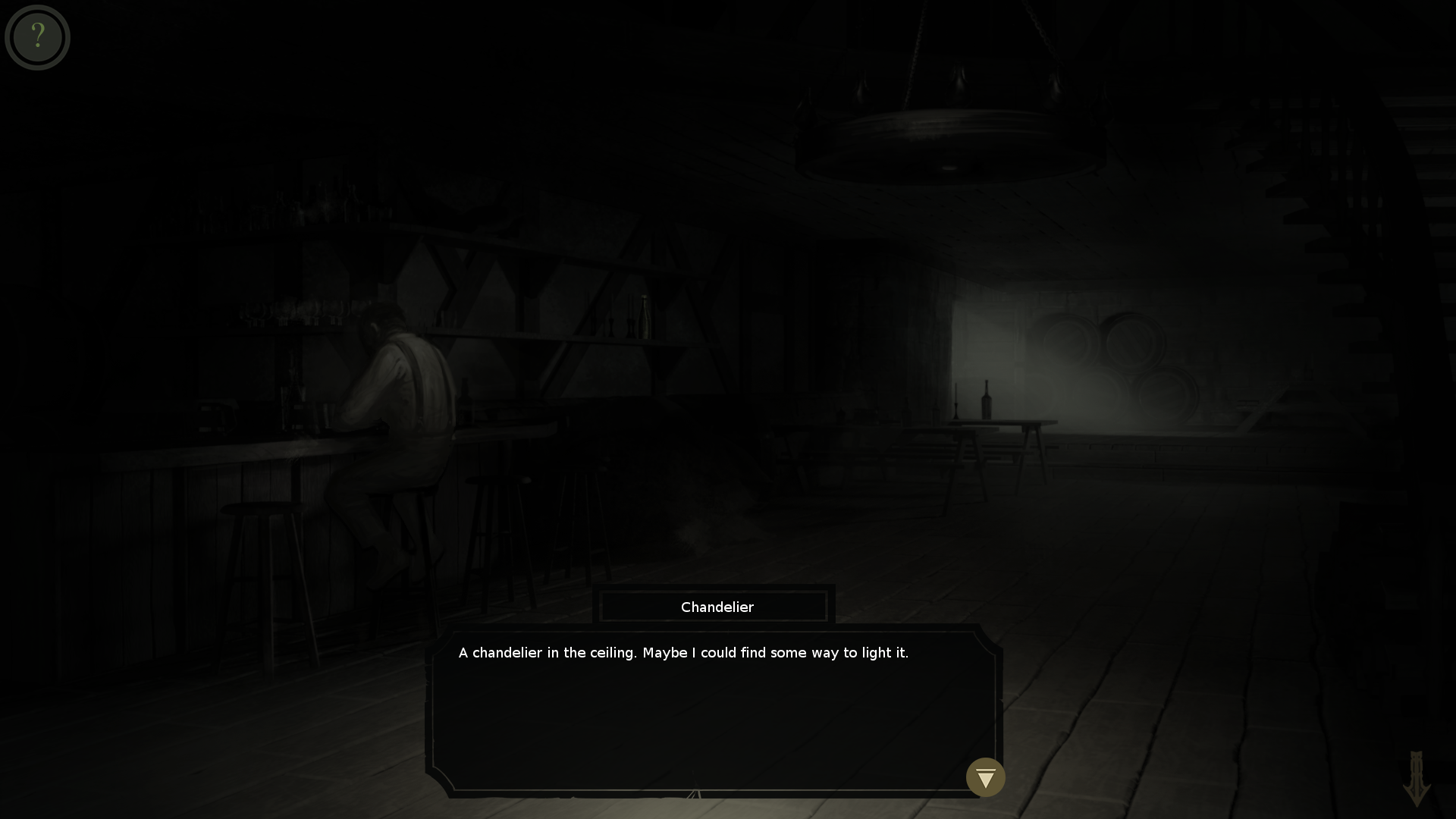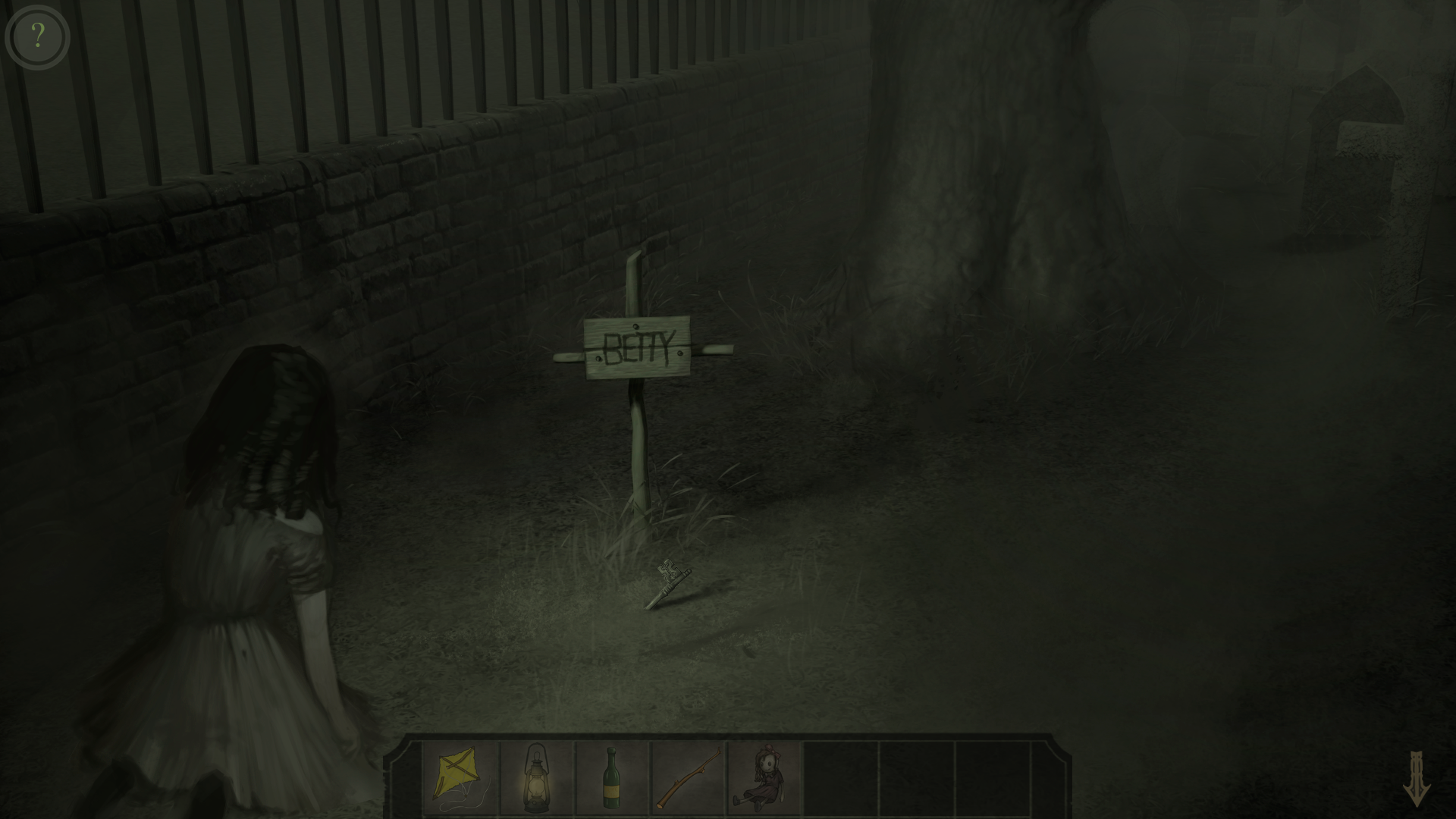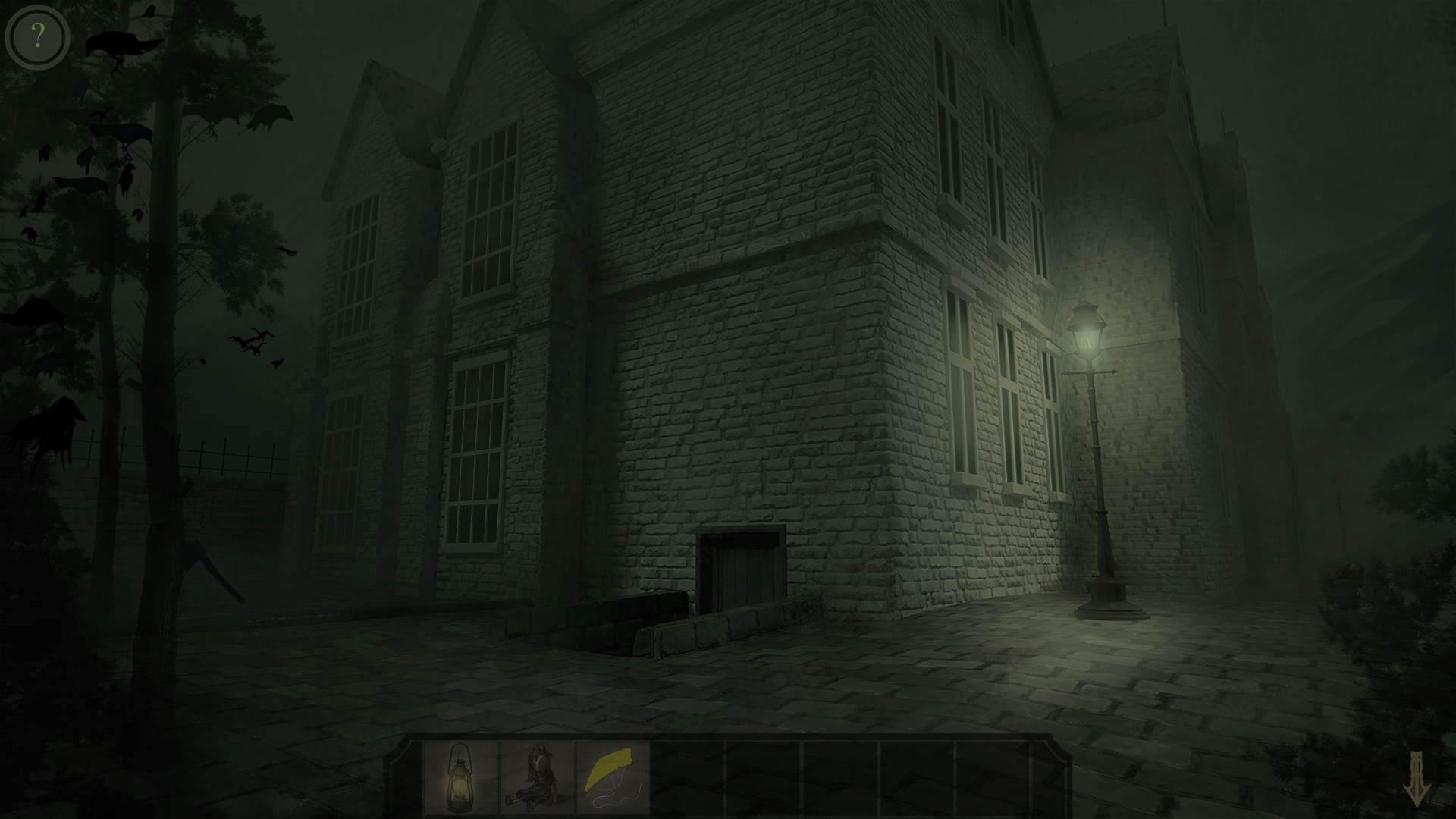Dunkelheit
Summary
Dunkelheit is the first game I was part of developing at The Game Assembly. It's a dark and mysterious point-and-click puzzle game, taking place in an abandoned village. The gameplay consists of the player interacting with 2d-images of the environment, solving puzzles by combining items in the inventory and using them in the world, as well as speaking to characters.
Specifications
- Created in 8 weeks half-time
- Team consisted of 2 level designers, 3 artists and 6 programmers
- Using Löve game engine
- Using Lua scripting language
My contributions
- Level design
- Game design
- Puzzle design and implementation
- Narrative design and implementation
- Scrum master
The team
Level Designers:
- Björn Månsson
- Julia Holmlund
Artists:
- Anniken Arfvidsson
- Christer Degerman
- Michael Tran
Programmers:
- Dan Sönne
- Edvin Jacobsson Pontén
- Johan Hagelqvist
- Kyle Thorburn
- Michel Stjärnfelt
- Robin Jacobsen
Figuring out how to make a game
With Dunkelheit, we worked hard on finding a story and theme that everyone in the team could agree on, and we all felt passionately about the product we wanted to create. Since it was our first game project we worked hard on establishing a workflow and figuring out how to make a game as a team. Even though we didn't come up with the most efficient processes, we always had a lot of fun and a great sense of team spirit!
Level Design
We wanted to create a game that was set in a realistic environment but still mysterious, with subtle supernatural influences. As such, we ended up with a tip-of-the-iceberg design philosophy, developing a very rich backstory which the game itself only subtly hinted at.
As level designers in the making, we gave the graphical artists a lot of room to create the kinds of environments that they would prefer, creating puzzles that could easily be set in any setting and later centering our puzzle design around the environments we were given. This worked well because we decided on the general setting and progression elements of the game together as a group, and later figured out the fine details in our design work along the way. The drawback to this was that much of the content was fuzzy at times, and we often ended up making big decisions at the last minute. However, this was definitely a step along the way to learn the benefits of an iterative process.
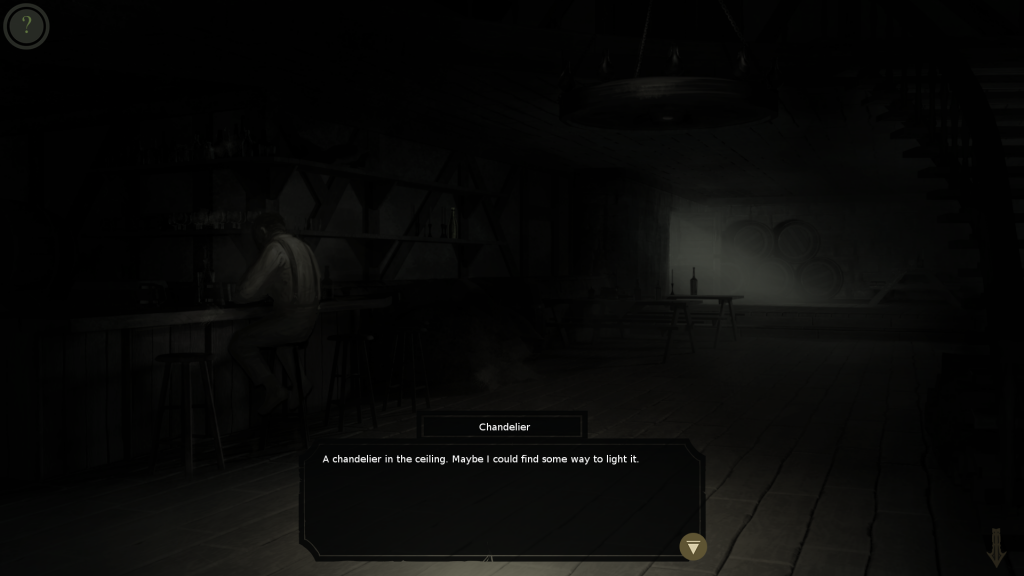
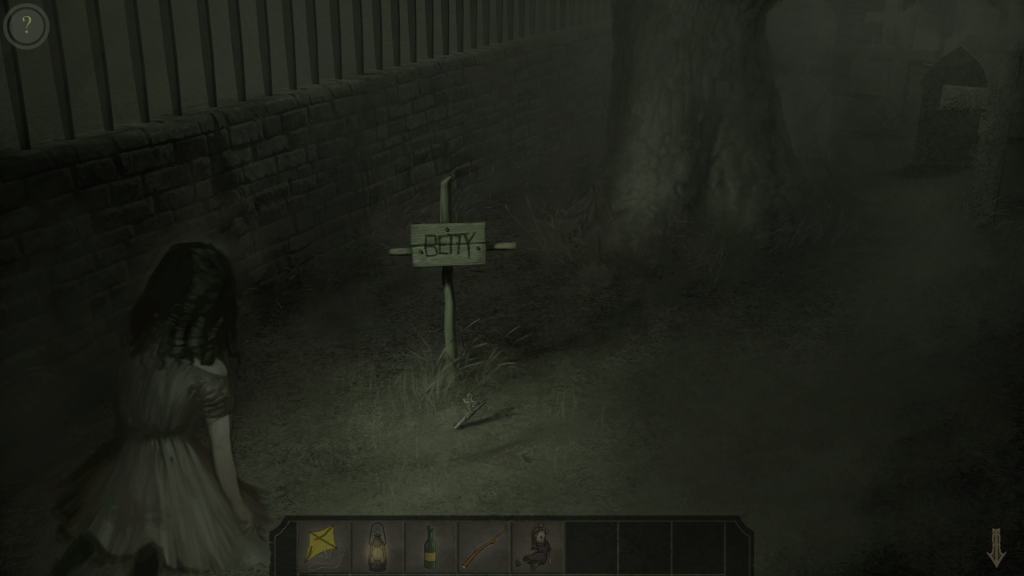
Conclusion
This was an amazing project to work on because we had a great team spirit and worked hard to maintain a common vision and goal as a team. Since it was our first game, we figured out our workflow as we went along and looking back, there's a lot that we could have done more efficiently. Still, I am immensely proud of the final product since I feel like we truly achieved our goal of creating a mysterious, hauntingly beautiful game, while having a lot of fun in the process! Even though a lot of decisions were made late, we managed to wrap it all up on time, eventually handing in and getting a passing grade on a product that all of us were really proud of.

